|
|

Europan 11
For the Europan 11 competition ZeroLogic participated on the location in Eindhoven, NL. The design brief was to revitalize the existing Faculty of Electromechanics (Potentiaal). The building was transformed into a student housing complex with an international faculty for the arts. The addition of more green literally into the building, is an attempt at creating a more tranquil atmosphere.

ProRail Comfort Zones
For a ProRail idea competition ZeroLogic designed heating pads that can be integrated into the stations' platforms. The pads provide a slow and steady warming starting at the feet and moving upwards. This uniform and more energy efficient system warms the same amount of people for just one fifths of the power.

Living Cargo
Living Cargo is a re-imagining of living on and with water. Instead of building concrete pontoons to build on we use old repurposed cargo ships and rebuild them to apartment complexes. These ships will be placed in the new urban plan of the Rotterdam Rijnhaven & the Maashaven. The main design driver here will be to create an energeticly self sustaining community and one that recycles its own waste products.

Control Room
In the Rotterdam Maassilo there is an dark and gloomy room on the seventh floor. This 850 sq.m. room is the Control Room, where before the closure of the Maassilo the grain was distributed into the silos. ZeroLogic is researching potential functions for this space and looking for potential investors.

Woning Topibolaan
In the Paramaribo city centre a small house will be built in 2012. This vacation house intended for two to three people is oriented inwards to a small patio with a big tree that provides shade. An overhanging roof provides shade from the sun and protection from the rain. ZeroLogic is currently developing the detail drawings of the design.

Visie Haagwijk
And old Dutch estate between Voorschoten and The Hague called Haagwijk is being redeveloped into an upper class housing project. The site is seperated into three distinct areas, each with its own design drivers and architecture. ZeroLogic made a design vision for these areas.

Holy Warming
The Saint Bavo Church in Harlem has trouble heating the vistors during the cold winter days. For an idea competition ZeroLogic designed a simple and cost efficient floor panel that allowed localized and fast heating where it is needed and when it is needed.

Woning Margrietstraat
A 40 years old house in Paramaribo was in need of some expansion and renovation. ZeroLogic designed their clients wishes for more space and luxury into the renovation. A roof terrace provides shade and a new all glass facade creates their new study hall. A small pool in the back, with added bar and sauna provides some much needed rest and relaxation. The new roof transforms the otherwise quite regular house to a comtemporary architecture.

Visie Lekbrug
The now derelict Lekbrug is unfortunately slated for demolition in 2014. The local municipalities were seaking for a temporary function for the bridge while it waited for its demise. ZeroLogic, head strong as they are, instead opted to revitalize the bridge into traffic connection between the two cities and turn it into an icon for wind power.

Eco Bunker
Together with a chemical engineering company ZeroLogic raised the question whether storage bunkers for chemicals could be made safer on one side but also more accessible and easier to build for rural communities. So we develeoped two concepts. The first is a soil and timber based structure that any farmer can make. Here they can safely store agricultural chemicals away from children, animals and thieves. The second is a concrete based stucture for long term professional storage of hazardous materials. This structure is self contained, blast proof and unburnable.

Cube House
For a client in Surinam a small an simple house was designed with a footprint of 10 by 10 metres. The 180 sq.m. house has an open kitchen and large living room on the ground floor. On the same floor there is also a study and laundry room. On the upper floor there is a master bedroom (with private bath and toilet), two bedrooms, and a bathroom.

iDo Kiosk
ZeroLogic designed a stylish and simple information kiosk for the iDo Cities program. The kiosk has a 42 inch touch screen and is run by a small Linux based computer in the base. The kiosk is connected to the internet and can be used as an information terminal for tourists. When the terminal is not in use it can show still and moving advertisments.

Loods Stichting Samarja
Stichting Samarja is a small non-profit company that promotes the recylcing of plastics. With their own trucks they pick up empty bottles for recycling. Before the bottles can be shipped they need to be stored and sorted. ZeroLogic designed a simple and functional storage hall for the company.

Mosque | Almere Poort
After the site for the mosque in Almere was moved to the new Almere Poort the building had to be redesigned for its new site. Where the mosque used to be in a park with free surroundings, the mosque is now restricted by its plot. The base of the building holds the general functions of the mosque and the Imam's residence. The prayer hall is designed as an independant volume on top of the structure that has been oriented towards Mecca.

Mosque | Almere Centre
In cooperation with the municipality of Almere and the Dutch Ahmadiyya Muslim Djamaat the initiative has been taken to build a new mosque for the local Ahmadiyya Community. Located in the Magica Laterna Park in the Filmwijk in Almere lies a piece of land that was previously occupied by an emergency school building. The municipality wishes to redevelop the land with a building of religious function. To this end the Dutch Ahmadiyya Djamaat has initiated a plan to design and build a new mosque on this location. However, the subject of Islam has become a sensitive issue in current times. With global and local political and social unrest around the Islam, the Ahmadiyya Muslim Djamaat has taken a different approach for the design of their new mosque. The new mosque will be more transparent and open to the community, the structure itself is more contemporary and embedded into its surroundings. The acts of an isolated few cannot speak for the majority of a people. The Ahmadiyya Community wishes to show that, with their mosque and their faith, they are respectful, peaceful and open to others.

The Klankkaatser
We experience our world through our five senses; smell, sight, taste, touch and hearing. Dutch sound-artist Hans van Koolwijk focuses on the last, our sense of hearing. He has surprised us in the past with his inventive sound-sculptures where he creates a unique experience of sounds and tones. On August 14th 2010 he unveiled his latest sound-sculpture to the public. The sculpture named 'De Klankkaatser', which means 'sound bouncer' was made with the intention to let one be able to experience the purity of sound. In our daily lives we almost never experience sound without the effects of echo's and reverberation. However through these environmental effects we have learned to orient ourselves and understand each other. Inside this small building of ten metres high a sound machine will be hung high. The sound it produces will bounce of the walls and are focussed at one point. When standing at this point it will seem as if the sound is generated INSIDE your head, as if you were the sounds' source.

Europan 10
The focus of this design is on the fifth facade, making use of the roof landscape as a public space for recreation. Rather than using rooflights and garden terraces to make a standard building block more interesting, the theme of the fifth facade has been seized to form a public space, a green area in the middle of the city. This means a rejection of the square blocks proposed in the master plan. The roofs are connected from west to east, an connected through bridges between north and south. This way, the roof landscape can flow freely between the Eifel and the Frontensingel. The buildings are shaped in an irregular pattttern to make sure they do not become monotonous despite their length, and are shaped around courts designed for optimal sunlight conditions (from southwest or southeast) to as many dwellings as possible. The original Brikken building has been left as a stand alone structure in the focal point of the landscape, a place where people can meet and enjoy this new approach to living.

The Ark of Holland
The WSC is a place where people can be educated and excited about our planet. They learn what the influences of climate change are and how we can live in this increasingly unpredictable world. However we should also learn that nature is neither our enemy nor our friend. We need this planet to survive, and it does not need us pollute, destroy and kill it. The idea of a World Sustainability Centre requires a program that fits its function. This design proposal envisions the WSC not as a building or a singular structure but purely a concept for a better future. Therefore the WSC is not one building and more like small city in the middle of the Afsluitdijk. The focus of this city will be ‘The Ark of Holland’. The ark is a floating structure that houses exposition spaces, workshop areas, a restaurant and a greenhouse. The Ark is accumulation of Dutch knowledge of living and working with water, a prototype of the future, today! The Ark not only floats but also moves! In the full sense of a boat the Ark has integrated turbines that allow it to travel the IJsselmeer.

Spectrum
De Boer, famous for their rapidly erected tent structures, asked us to design and engineer a temporary accommodation that could be built within two weeks. Yet the design was still required to meet or exceed building regulations. The design was two fold; on one side a Main Frame Truss Structure that could be build from a minimum span of 10 meters to a maximum span of 60 meters. In lengths up to 100 meters. The second challenge was the facade that needed to be fully thermally insulated and air tight yet rapid in assembly and disassembly. We designed a modular thermally interrupted frame that could accommodate insulated panels, glass and windows. The modular frames could be rapidly fixed to the main frame structure without the need for wet seals and additional rubberizing. Everything is either integrated in the frame or the structure. This project joined product design, architecture and engineering and required many disciplines to intensively work together. The Spectrum is momentarily still in the prototyping phase.

Inspired by Nature
The search for new furniture for the Vondelpark requires careful consideration of both aesthetic and functional parameters. In an aesthetic sense the new furniture needs to blend in with the environment. So that the main focus would always be the nature of the park. Simultaneously the new furniture needs to be modern and appealing. In a functional sense the new benches would need to be comfortable yet robust. The lamp posts need to provide enough light for safety and vision on varying locations within the park. As in many designs inspiration can always be found in nature. In this case it seems ever more suitable. The initial concept was created for use on the benches, a plant sprouting from the soil served as a design driver where the leaves would become the sitting area and the flower the back support.

The Benetton Cascade
Teheran is city with a long history, but few buildings have survived the years. Hasty modernization during the past century has replaced many old buildings for modern high rises. Contemporary western architecture has swept the city. Unfortunately leaving little room for the richly detailed and expressive architecture of antiquity and its offspring. Most Persian and Islamic architecture is grounded in mathematics and patterns. Richly detailed geometry and layouts provide a feast for the eyes. The design for the new building on site B is not surprisingly inspired with the use of geometry and patterns. The facade of the building is a load bearing concrete structure. The pointed oval shape of the elements are inspired by the domes and arches. The facade glazing structure in itself is a pattern of curves and lines that follow each other for the full height of the building. By eliminating all horizontal lines and introducing seeming endless curves in the facade the structure gets a fluidity that makes looking around and at the facade a pleasure. The buildings functions can still be read through the facade the lower arches are the retail floors and the middle ovals represent the office spaces and the inverted arches are the apartments.

Benetton City Gardens
The required program for the building needs to intensively use the available space on the plot and will take the building to a height of about 30 meters. One of the primary losses during dense urbanization is the loss of natural space. Nature makes way for concrete & steel, people and cars. The intent of this design is to bring back the lost natural space by utilizing the vertical volume of the plot to its maximum. The decrease in required floor space with the increasing height allows the building to step back and in a sense make way for nature. The most prominent eye catching quality of the building is the blend of steel, glass and concrete which is none the less dominated by the green gardens surrounding it. This places the building in contrast to the regular city block more common in modern cities while providing for a better working and living environment.

Wings of Dubai
The Zabeel Park located in Dubai is an intricately designed landscape that offers recreation in lush green surroundings. Centrally located is a large pond that many will experience as an oasis in the middle of the dessert. Thyssen Krupp, together with the Dubai Municipality, have organized an international design competition for a tall emblem structure that will need to enhance the experience for park visitors and to also become a new icon in a dynamic city already full with internationally renowned landmarks. The past and the future play an intertwining role in the design of this new landmark. The wings of the eagle have been the inspiration for the structures main form, which are two soaring wings reaching for the skies. A symbolic representation of Dubai’s energetic growth in many sectors during the past decades. Held between its wings is a golden pearl referring to Dubai’s humble beginnings as a small trading village.

Waterscape
This design concept is looking for a new way of living where the ground becomes roof and garden and a gradient of the landscape. The water is part of the outdoor space, it has come in the form of a water garden (pond) on the same level as the lake. This provides a suburban habitat that is half land and half water. The fluctuating water levels in the lake means all the houses are located in a dynamic landscape that occasionally floods. The recreation area in the green zone will submerge when the rivers overflow but elevated paths are always dry. By allowing areas to flood the loads on necessary dams and dikes can be reduced. The design has become an integral part of the landscape. The landscape runs through the house and the water runs between the houses into the landscape. The design zips the two separate areas, landscape and water together. Privacy is important in the environment and the landscape helps by pulling the houses themselves into it and are thus almost entirely removed from sight.

Dutch Nomads
Floating homes are often limited to small scale use of the water availible. This concept is on a larger scale and is used as floating platform for multiple dwellings, parking and green followed by floating or isolated dwellings. The floating dwellings have the possibility to decouple from their dock and travel the lake. The design of the floating homes gets its inspiration from the greenhouses in the area and their whole glass facades, and the simple nomadic tents of two sticks and a cloth. Two laminated wooden frames are the main frame a roof of solar cells and sun boilers are the canvas. A glass facade is the houses enclosure. The homes get a nomadic character because they can operate independantly and only come back to shore if there is a need for it.

Municipality & Station of Delft
The actual design competition for the new municipality and train station in Delft which I did at Rudy Uytenhaak Architects was a step into reality for the mainly academic status of my graduation project. Confronted with an actual client, with demands and a budget, this design still attempted to find new exiting ways for office work, commuter logistics a nd a pleasing architectural form. The primary design vision is based on the feathered wings of a bird hovering over the site. The four feathers (fingers) of the complex represent the offices. The feathers are skinned with travertine stone and offset at the end just the way a bird’s feathers do. The huge complex houses the main train station for Delft underground with on top the new Delft municipality. The complex totals to about 30,000 sq.m. for the new municipality. And additional floor space for all train station related functions.

The Hague Leyweg
Due to the expansion of the city The Hague the current municipal office has become too small to serve the city. In order to serve more of the populous a second building is required. In 2006 Rudy Uytenhaak won the competition to design and build The Hague’s second city hall. The principle of the design is an up side down pyramid of just three sides. The prefab facade consists of three dimensional elements. The outer non load bearing layer consists of white hardening cement and Norwegian marble, giving the concrete a white sparkle in the sun. Just like Richard Meier’s design for the primary municipality building the interior and exterior will mainly be white. The entire project fills 40.000 sqm. with offices, public functions and apartements. The new municipality is currently under construction and due to be finished by the end of 2010.

Impulse
Impulse is the name of the design for this train station and municipality for Delft. In the early stages of designing the ideas led towards a fractal facade that would resemble a sheet of crumbled paper. That basis was the inspiration for a building engineering research and the aestheric developement of the project. The dynamic appearance of the facade was to create a building that would act as an impulse in an otherwise stagnated urban surrounding. This prototype would serve as the main inspiration for the centre of Delfs’ redevelopement. In order to create this facade structure a system of 12 triangular elements of slightly varying sizes was designed. These concrete elements could be joined to create the facade we sought. The facade was made with concrete elements that would separate inside from outside in a twisted single skin load-bearing solution, something that has not been done before. This would ensure the architectural vision that the facade facetation could be fully experienced from both sides without interference from intermediate structures.

Radio Therapeutic Centre
Sunburst is one of the first design concepts for a new expansion of the Academic Hospital in Surinam. After selecting from five original concepts the final concept “Sunburst” was chosen for further development. The expansion would be for the treatment and care of cancer patients. This meant that a shielded area would be needed for radiotherapy next to general functions associated with a hospital. The main concept for the building is a quarter sun with at its core the radiology departments and in two waves around it the other functions. The form is a paradigm for the function of the building, radiation to treat the patients and the radiating form of the building that, like a shining sun, will heal and nourish.

Jip & Janneke
Jip & Janneke are two names unmistakably intertwined with Dutch culture. The two characters are from a series of childrens’ comic of the same name. Brother and sister, Jip and Janneke are always together and Jip always wears his striped shirt. Jip & Janneke were the inspiration for this 250 meter high rise design. Two towers of offices standing next to each other and using each other for stability. The cores of each tower runs straight but the floors and facade shift slightly each level to create a skewed facade. This creates the illusion the floors are slanted while in reality they of course are not.

Hanging Glass
The main design driver for this facade was the wish to create a transparent as possible thermal flu facade by using the least opaque materials. Everything that could be made out of glass was done so. Steel nodes and clamps were engineered to assemble the glass parts. It was attempted to design the outer skin of a dual layer climate facade with a full glass mullion. Steel clamps were designed to fix the glass mullion to the floors and smaller steel clamps fixed the outer glass to the mullions. In all cases the friction between the clamps and glass transferred the forces. No actual penetration or mechanical fixing into the glass was required. A digital design was used to make a full scale model of the facade, with working parts to test the viability of the design.

E.B.D.
The main design brief of this project was the complex program of laboratories and offices that needed to be placed within a 100 meter high rise with a green house on top. The first three floors contain the communal areas like an auditorium and the cafeteria. The following floors are a built out of five sections of 2-3 blocks. These blocks are two floors laboratories on one side and three floors offices on the other. A spit level staircase joins these five levels. On the roof a 1500 m3 green house is placed for research purposes. This project goes deeper then the regular architectural design of a high rise and integrates, structural, mechanical, electrical and architectural needs into a coherent whole.
-
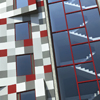
Europan 11
DESIGN 2011 - Revitalization design for the TU Eindhoven Potentiaal building -
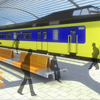
ProRail Comfort Zones
DESIGN 2011 - Passenger warming idea at the train stations during the cold winter months -
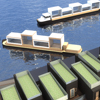
Living Cargo
DESIGN 2011-2014 - Research project for the renovation of cargo vessels into appartment complexes -
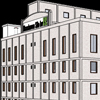
Control Room
DESIGN 2011-2013 - Revitalization project of the Maassilo Control Room -
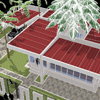
House Topibo
DESIGN 2011-2012 - Design for a small vacation house in the Paramaribo city centre -
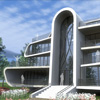
Manifestatie Haagwijk
DESIGN 2011 - Design vision for the new Haagwijk residence complex -
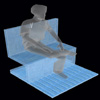
Holy Warming
DESIGN 2011 - Idea competition for the Saint Bavo Church in Harlem -
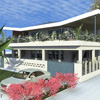
Renovation Margrietstraat
DESIGN 2011-2012 - 40 years old house that has been expanded and renovated -
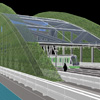
Lekbrug Renewed
DESIGN 2011 - Renovation of the Lekbrug with a turbine power station -
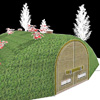
Chemicals Storage Bunker
DESIGN 2011 - Concept design for a environmentaly friendly storage bunker -
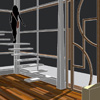
Cube House
DESIGN 2010 - Sketch design for a house in the tropics -
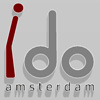
iDo Cities Kiosk
DESIGN 2010 - Design for a new touch interface kiosk for tourists -
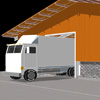
Storage Barracks Samarja
DESIGN 2010 - Design of a storage barracks for Stichting Samarja -
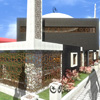
Mosque | Almere Poort
DESIGN 2011 - Mosque in the Homeruskwartier in Almere Poort -
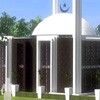
Mosque | Almere Centre
DESIGN 2010 - Mosque in the Magika Laterna Park in Almere Centre -
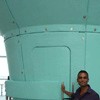
The Klankkaatser
DESIGN 2010 - Symphony of building technology, art & architecture -
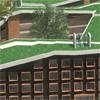
Europan 10
DESIGN 2009 - The Fifth Facade, urban plan for Belvedere Maastricht -
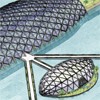
The Ark of Holland
DESIGN 2009 - World sustainability centre for the Dutch Afsluitdijk ideas competition -
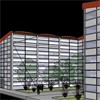
Spectrum
DESIGN 2008-2009 - Spectrum by De Boer, designed & engineered with Arup -
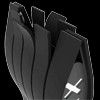
Inspired by Nature
DESIGN 2008 - New repetitive furniture design for Amsterdam's Vondelpark -
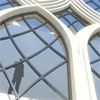
The Benetton Cascade
DESIGN 2009 - New office and shop of United Colours of Benetton with a green atrium -
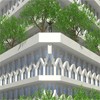
Benetton City Gardens
DESIGN 2009 - New office and shop of United Colours of Benetton with facade terraces -
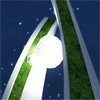
Wings of Dubai
DESIGN 2008 - Icon structure for an emerging city already filled with may icons -
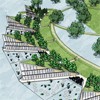
Waterscape
DESIGN 2007 - Residential neighbourhood concept in a flood plane -
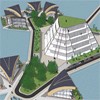
Dutch Nomads
DESIGN 2007 - Floating residential & commercial neighbourhood of the future -
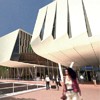
Municipality & Station of Delft
DESIGN 2006-2007 - New Municipality & Train Station of Delft -
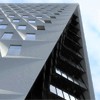
The Hague Leyweg
DESIGN 2005-2010 - New municipal offices and housing for the city of The Hague -
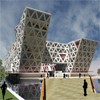
Impulse
DESIGN 2005-2006 - New municipality and train station in the Delft city centre -
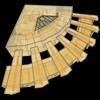
Radio Therapeutic Centre
DESIGN 2005 - New Radio Therapeutic Centre for cancer treatment in Paramaribo -
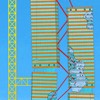
Jip & Janneke
DESIGN 2004 - 250 metre office tower design in the Rotterdam City Centre -
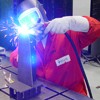
Hanging Glass
DESIGN 2003 - Prototype design for structural double skin glass facade -
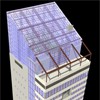
E.B.D.
DESIGN 2003 - Office and laboratoy tower design, with rooftop greenhouse!



